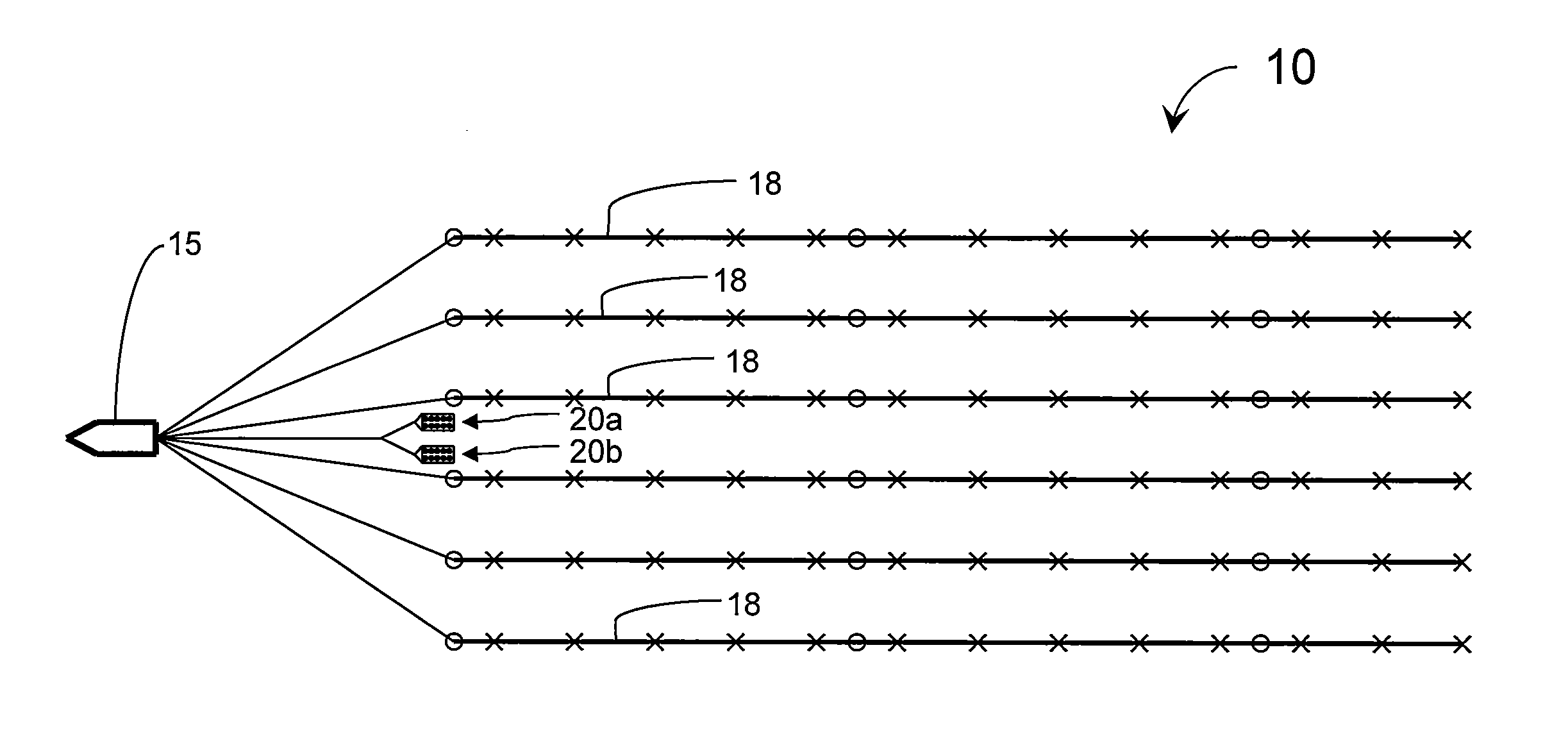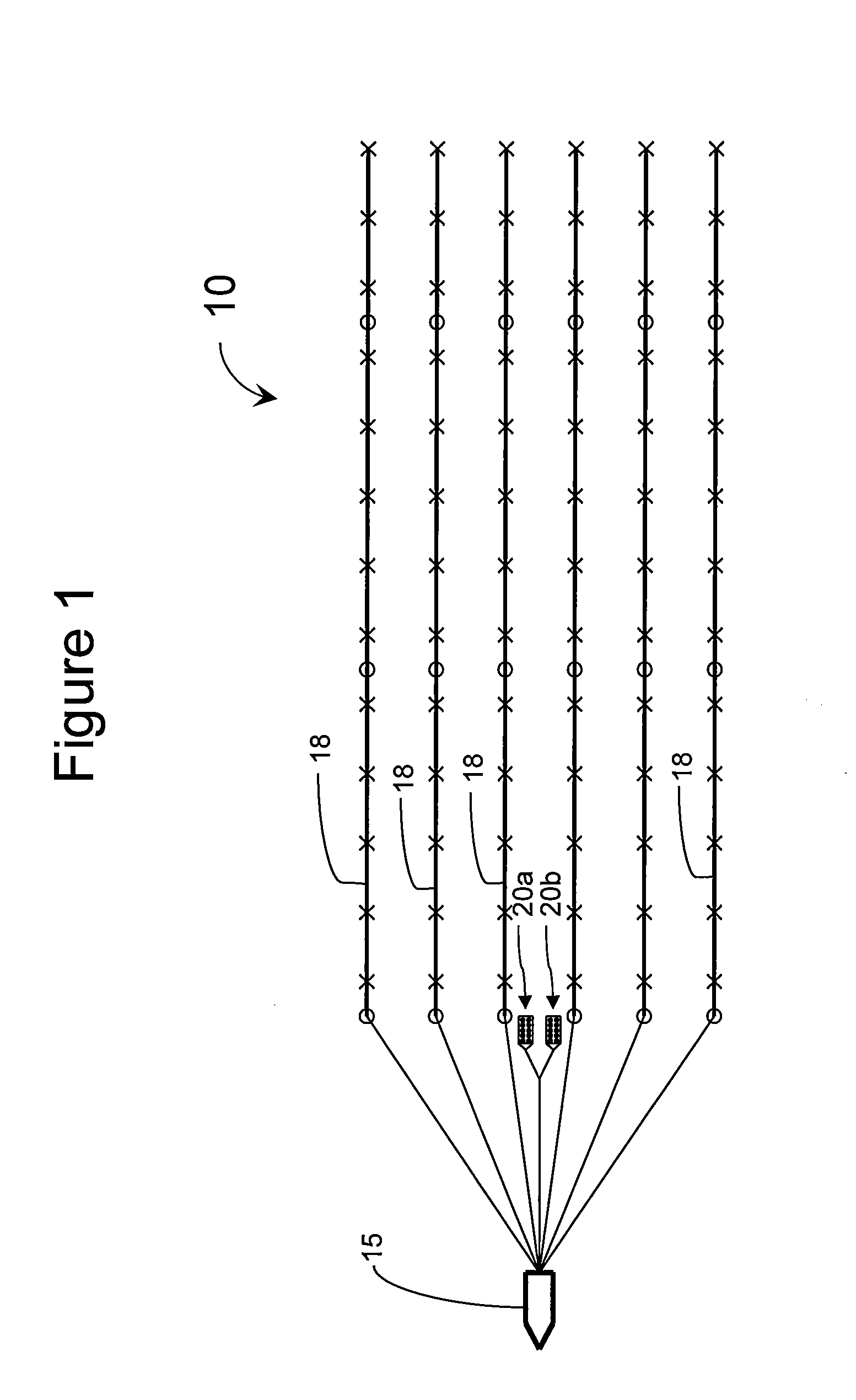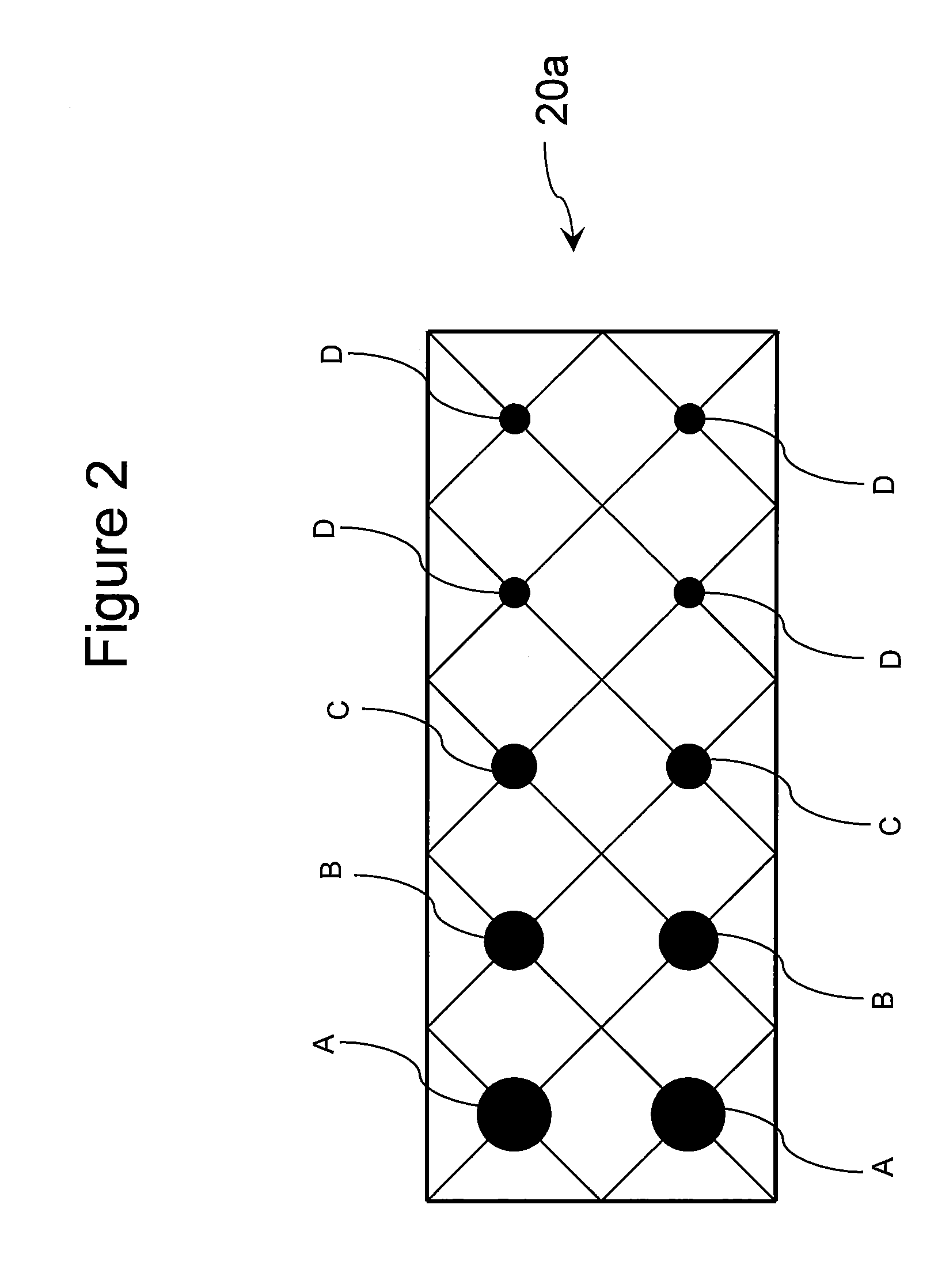High density source spacing using continuous composite relatively adjusted pulse
a composite pulse and source spacing technology, applied in seismology, seismology, instruments, etc., can solve the problems of large data acquisition pressure, harm, injury or irritation of whales and other marine life, and expensive seismic data acquisition in marine environments, so as to achieve the effect of increasing the data density of geologic structures in the earth
- Summary
- Abstract
- Description
- Claims
- Application Information
AI Technical Summary
Benefits of technology
Problems solved by technology
Method used
Image
Examples
Embodiment Construction
[0020]Turning now to the detailed description of the preferred arrangement or arrangements of the present invention, it should be understood that the inventive features and concepts may be manifested in other arrangements and that the scope of the invention is not limited to the embodiments described or illustrated. The scope of the invention is intended only to be limited by the scope of the claims that follow.
[0021]For the purpose of this discussion, an air gun seismic source will be used as an example of an impulsive seismic source. It should be understood that there are other impulsive sources that could be used with this invention, for example sparkers, plasma shots, steam injection sources or even explosive based sources. As shown in FIG. 1, a seismic acquisition system is generally indicated by the arrow 10. The system 10 includes a tow vessel 15 towing a number of streamers 18. Along each streamer 18 are a large number of seismic receivers, each indicated by the letter “x” a...
PUM
 Login to View More
Login to View More Abstract
Description
Claims
Application Information
 Login to View More
Login to View More - R&D
- Intellectual Property
- Life Sciences
- Materials
- Tech Scout
- Unparalleled Data Quality
- Higher Quality Content
- 60% Fewer Hallucinations
Browse by: Latest US Patents, China's latest patents, Technical Efficacy Thesaurus, Application Domain, Technology Topic, Popular Technical Reports.
© 2025 PatSnap. All rights reserved.Legal|Privacy policy|Modern Slavery Act Transparency Statement|Sitemap|About US| Contact US: help@patsnap.com



